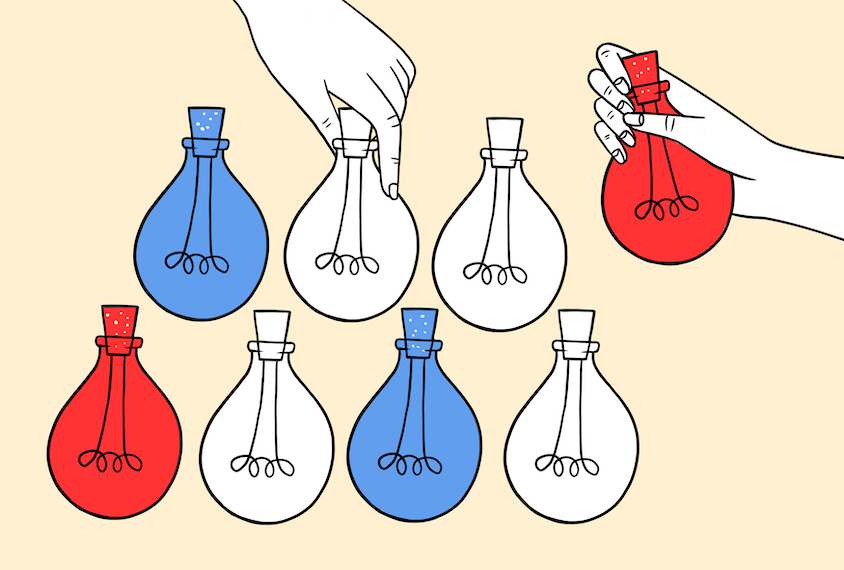Jeremy Veenstra-VanderWeele is no stranger to null results, according to Spectrum’s profile of the psychiatrist last month. Over the past two years, trial results from Veenstra-VanderWeele and his colleagues have shown that intranasal oxytocin and the vasopressin blocker balovaptan are each no more effective than placebo at improving social or communication challenges in autistic children.
Results such as these — null or otherwise — come from carefully constructed trials founded on solid preclinical evidence, Veenstra-VanderWeele told Spectrum.
Each month’s issue of Null and Noteworthy highlights a slew of — to borrow Veenstra-VanderWeele’s baseball analogy — “swings and misses” in research on autism and the brain. Thanks for tuning in. If you have ideas for studies to cover, or other thoughts to share, please send them my way at [email protected].
Imaging (non)imitation:
A method to noninvasively measure neuronal activity on millisecond timescales using modified functional MRI (fMRI) promised last year to “open up new avenues in brain science.” The approach, dubbed DIANA — short for “direct imaging of neuronal activity” — was supported by results from a study that tested the approach in anesthetized mice.
The findings could not be independently replicated by researchers who performed almost identical experiments but found no neuronal-activity-related signal, according to a preprint posted on bioRxiv in May. Only when researchers inappropriately excluded outliers were they able to reproduce the signal. “Throwing away bad trials is often practiced” by scientists, they write — sometimes in a way that makes experimental sense, and sometimes in a way that reaffirms pre-held hypotheses.
The preprint generated a social-media buzz in the neuroscience community last month.
Parental contributions:
A study published earlier this month in Cell Genomics brought replications of prior results on the family genetics of autism, plus a null result to boot. First, the replications: Pairs of siblings who both have autism share more of their parents’ genomes than pairs in which one sibling has the condition and the other doesn’t, according to data from about 5,800 families. And pairs in which both siblings have autism tend to share more of their father’s genome than their mother’s, supporting past findings.
Now for the null result: The amount of excess maternal genomic sharing in pairs of siblings who both have autism was insignificant.
Et. al.:
- Eight weeks of continuous theta burst stimulation, a version of transcranial magnetic stimulation, did not lead to a difference in neuropsychological or clinical outcomes for autistic people aged 8 to 30 years compared with those who received sham stimulation, echoing null results covered in the January edition of this newsletter. Autism Research
- The parent-report version of the Vineland Adaptive Behavior Scales — a questionnaire many researchers use to measure daily-living skills — does not share the same three-factor structure as the original comprehensive interview version, suggests an analysis of questionnaire responses for 9,593 autistic people. The findings call into question the validity of the questionnaire for autistic people, the researchers conclude. Autism
- Neither initiating joint attention — such as pointing to an object to direct a person’s attention — nor motor imitation with objects scores predicted language outcomes in young Taiwanese children at two time points 18 months apart. But responding to joint attention — such as following someone’s gaze and pointing in an attempt to understand the object of their attention — and manual imitation scores did predict later language development. Journal of Autism and Developmental Disorders
- Researchers were unable to satisfactorily validate a German version of the Glasgow Sensory Questionnaire, a tool for measuring sensory-processing differences. Instead, they found a lower-than-expected correlation between scores on the questionnaire and levels of autism traits, according to results from 297 German-speaking students. BMC Psychiatry






